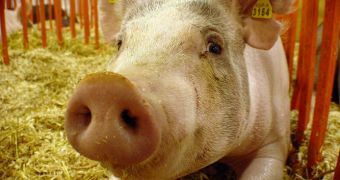A team of German scientists from the Ludwig-Maximilians-Universitat Munchen (LMU) has recently developed a new animal model for studying the effects of type II diabetes, when they genetically-engineered pigs to exhibit symptoms that are associated with the condition in humans. This approach is tremendously important when considering the fact that the diseases accounts for many of the heart attacks and strokes cases in patients, as well as for obesity and vision loss. Millions of people are in danger of developing this condition sometimes during their lives, and so the new research could improve the quality of life in many.
Diabetes type II develops as genetic and environmental factors combine inside an individual to produce a resistance to the action of the hormone insulin. This chemical plays a major part in the human body, as it is directly and primarily involved with glucose and sugar metabolism. Once its action disappears, there is nothing keeping glucose concentrations in check, which has disastrous consequences. With the new LMU animal model, whose development was led by professors Eckhard Wolf and Rudiger Wanke, possible methods to mitigate these effects could be tested on pigs first, and not on humans.
“The physiology of the pig is actually very similar to that of humans. Our model therefore provides a unique tool for the development and testing of new approaches to the diagnosis and therapy of diabetes,” Wolf explains. He adds that, by 2030, statistics show that the number of diabetes type II cases will reach more than 370 million in Germany alone. At this point, about 7 million individuals have it. The situation is even worse in the United States, where the obesity pandemic is setting the foundation for more and more people to develop this metabolism disorder. This will, in turn, produce a great surge in healthcare costs that governments would need to cover with dwindling resources.
“In our genetically modified (transgenic) pigs, which produce a partially defective GIP [glucose-dependent insulin-releasing polypeptide] receptor, the response to GIP is also very weak. Our results suggest that inability to respond to GIP leads not only to a fall in glucose utilization and insulin secretion, but is also associated with a reduction in the mass of beta cells in the pancreas. This would argue that impaired response to GIP is more likely to be a cause rather than a consequence of diabetes. We hope that our model will help to accelerate the translation of the latest research findings into clinical applications,” concludes LMU expert and research associate Dr. Simone Renner.

 14 DAY TRIAL //
14 DAY TRIAL //